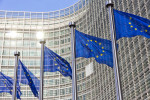What’s newly published by the EFSA, this summer?
This summer EFSA published several documents:
- A Public consultation regarding the update of guidance on health claims related to antioxidants, oxidative damage and cardiovascular health. Indeed the original guidance was published in 2011 and knowledge has improved since. The consultation was opened until the 3 September. You can find the draft guidance under consultation here.
- An update of its 2011 advice on the risks for human and animal health from pyrrolizidine alkaloids, a large group of toxins produced by different plant species that can unintentionally enter the food chain. The EFSA’s experts concluded that exposure to pyrrolizidine alkaloids in food, in particular for frequent and high consumers of tea and herbal infusions, is a possible long-term concern for human health due to their potential carcinogenicity. Find the statement from EFSA on the risks here.
- Definition of dietary reference values for riboflavin (vitamin B2) as an update of the values established by the Scientific Committee for Food in 1993. As part of its review of scientific advice on nutrient intakes the EFSA’s experts has set dietary reference values for riboflavin for all populations. The panel defined daily population reference intakes (PRIs) for riboflavin as follows:
- 0.6 mg for children aged 1-3 years;
- 0.7 mg for children aged 4-6;
- 1.0 mg for children aged 7-10;
- 1.4 mg for children aged 11-14;
- 1.6 mg for adolescents aged 15-17 as well as for adults;
- 1.9 mg for pregnant women;
- 2 mg for lactating women.
- For children aged 7-11 months, the panel set an adequate intake (AI) of 0.4 mg per day.




 Français
Français
No comments